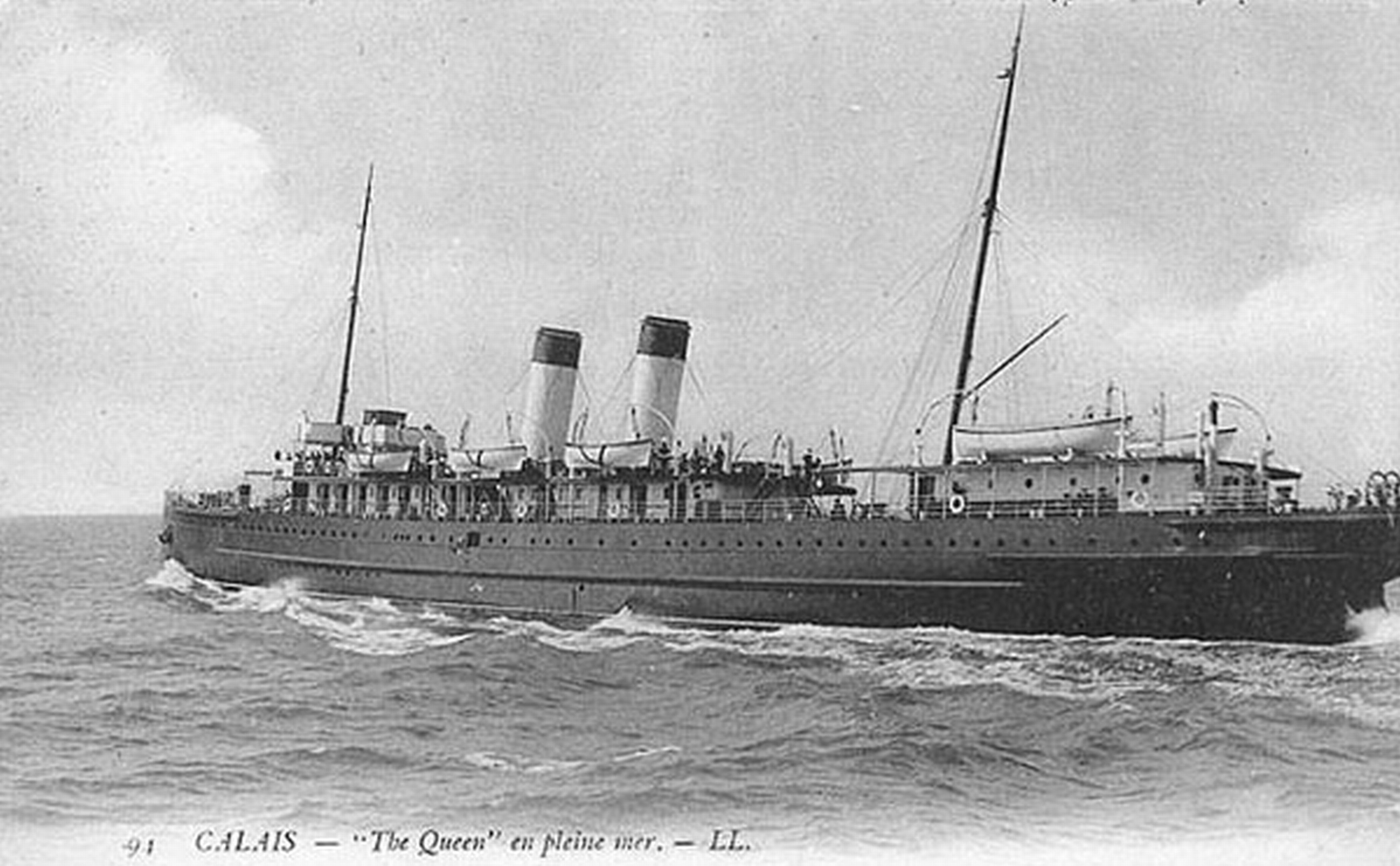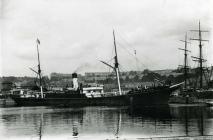Content can be downloaded for non-commercial purposes, such as for personal use or in educational resources.
For commercial purposes please contact the copyright holder directly.
Read more about the The Creative Archive Licence.
Description
THE QUEEN was one of 10 vessels sunk on the same day by U-38 under the command of Kpt Max Valentiner.
Built in 1897 by the Ailsa Shipbuilding Company, Troon, (yard number 65), THE QUEEN had maintained its links with the Clyde through its service life. It was owned by John Hay & Sons, Glasgow and had a Scottish captain in D MacAlister. The steamship was carrying coal from Ayr to the Navy yard at Devonport.
THE QUEEN was stopped by the submarine U38. The crew were then forced to abandon ship and the ship was sunk by gunfire 40 miles north- northeast of the Smalls.
U38 and her commander would go on to be among the five most successful submarines and submarine commanders of the Great War.
Max Valentiner was born on 15 December 1883 at Tønder, Denmark. He became a Sea Cadet in 1902 and moved up the ranks until being made a Kapitänleutnant in March 1914. He commanded U-38 from 4 December 1914 – 15 September 1917, and U-157 from 22 September 1917 – 20 July 1918. He was decorated with the Pour le Mérite and Hanseatic Cross on 26 December 1916, after completing a patrol in the Mediterranean (U38 had sank 23 enemy warships and merchant vessels).
Valentiner’s first patrol in U-38 around the UK had been completed with an even higher tally – 57 vessels sunk or damaged.
U-38 was built between February 1913 and September 1914 at the Germania Yard, Keil. Its class of submarine had a normal complement of 7 officers and 28 crewmen, and was armed with a 4.1in gun, two 22-pounder guns, a machine gun, 4 torpedo tubes (2 at the bow and 2 at the stern), and 8 torpedoes. The submarine’s fuel bunkers and batteries gave it an operating distance of about 7,500 miles.
All in in all, a very formidable weapon which Valentiner and successive commanders deployed to great effect.
Before being surrendered to France on 23 February 1919, the submarine was responsible for sinking 138 ships, damaging 6 more; taking 3 ships as prizes; plus the damaging of the armoured cruiser HMS ROXBURGH on 20 June 1915 and the sinking of the French gunboat SURPRISE on 3 December 1916.
Max Valentiner’s war total is even higher – 143 ships sunk, 1 warship sunk, 6 ships and warships damaged, and 3 taken as prize. Only two other commanders (Kpt Lotha von Arnaud de la Periere and Walter Forstmann) achieved greater success. Indeed, after the war, Valentiner was listed as a war criminal by the British authorities because of his unorthodox methods of attack.
On the day that THE QUEEN met its fate, Valentiner had positioned U-38 in the narrowing of the shipping lanes in St George’s Channel - between Cardigan Bay and the Tuskar Rock lighthouse, Ireland. Over the next 24 hours, the submarine would sink:
• BONNY, 2702 ton British steamship operated by the British & African Steam Navigation Co Ltd (Elder Dempster Line);
• GEORGE BAKER, a British steam drifter owned E A Baker of Great Yarmouth
• GLENBY, 2196 ton British steamship owned by R Ropner & Co, West Hartlepool, and carrying coal from Cardiff to Archangelsk
• ISIDORO, 2044 ton Spanish-owned steamship carrying iron ore from Bilboa to Glasgow;
• KIRKBY, 3034 ton British steamship also owned by R Ropner & Co, West Hartlepool, carrying coal from Barry
• PAROS, 3596 ton British steamship requisition by the Admiralty and bringing wheat from Karachi to Manchester
• REPEAT, a British steam trawler owned by R J Tripp of Kessingland, Suffolk
• THE QUEEN, 557 ton British steamship carrying coal from Ayr to Devonport
• THORNFIELD, 488 ton British steamship belonging to Liverpool and on passage from London to Peel, Isle of Man.
We speak of success for the German submarine, but each event was a tragedy for the crews and owners concerned.
Of the 10 vessels lost, the ISIDORO is perhaps the most significant. This steamship was the first Spanish-owned vessel sunk by a German u-boat. It brought a storm of protest from the Spanish Government. Germany had come under strong pressure from America after the sinking of the LUISITANIA in May 1915, to modify its whole submarine campaign with the promise that liners would not be sunk, if engaged in no hostile act. The sinking of the ISIDORO threatened to alienate yet another neutral nation.
With the whole political situation so delicate, the German Admiralty dispatched secret orders for submarines to confine themselves to ‘cruiser warfare’, i.e. submarines were to surface to search for merchant ships (i.e. no torpedoing without warning), ensure that merchant crews were in a place of safety before sinking the ship, unless the ship had shown ‘persistent refusal to stop ... or active resistance to visit or search’. However, U38 continued southwards after the 17 August, and joined U24 and U27 in the Western approaches and these rules of engagement became more blurred in execution. These three submarines continued their attacks on shipping between southern Ireland and Ushant, bringing the number of loses to a peak for the year in this month – 121 ships sunk and 5 damaged (U-38’s contribution was 5 trawlers/drifters, 3 sailing vessels and 22 merchant ships). From these sobering statistics, we can see the formidable threat that German submarine warfare had begun to present.






Do you have information to add to this item? Please leave a comment
Comments (0)
You must be logged in to leave a comment